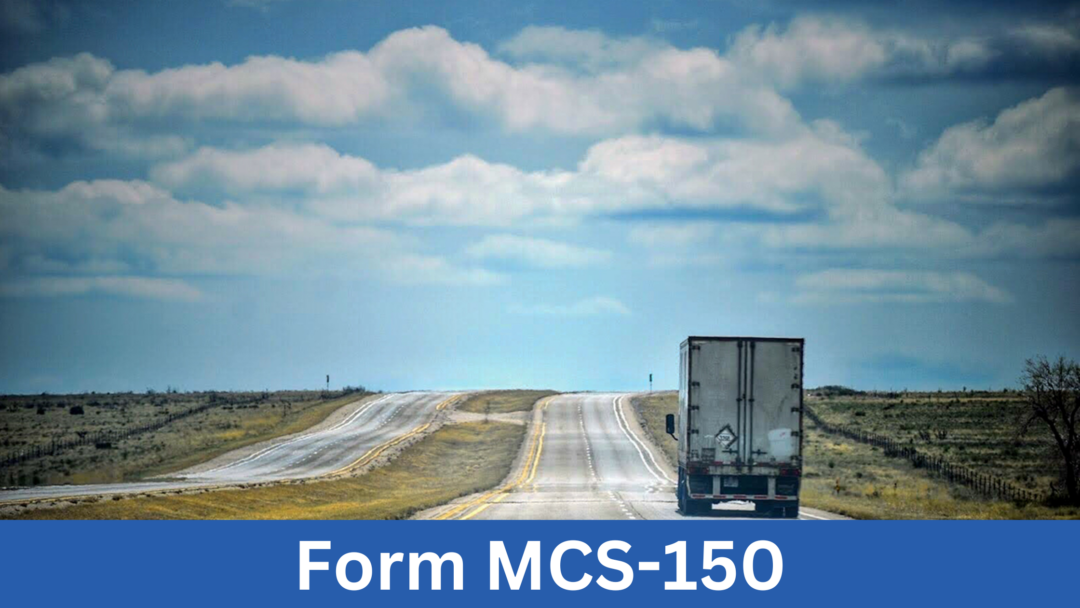In 2020, 4,014 people lost their lives in collisions with commercial motor vehicles. These fatalities involved drivers of passenger cars 68% of the time and drivers of commercial vehicles 15% of the time. 16% of the fatalities are pedestrians, cyclists, and motorcyclists.
Compared to 2009, when it was at its lowest level since fatal crash data gathering began in 1975, the number of people killed in heavy truck crashes increased by 28% in 2020.
With an increase in the number of fatal truck accidents on the roads, additional regulations for motor carriers to ensure road traffic safety have been a top priority within the FMCSA and DOT.
The FMCSA is responsible for monitoring and ensuring compliance from motor carriers. These regulations are issued in the Federal Register and organized in the US Code of Federal Regulation (CFR).
To learn more, you can either buy copies of the appropriate volumes of the CFR in a book format from the Superintendent of Documents at the U.S. Government Printing Office, or you can access the CFR online when you click here.
The FMCSA is constantly working to improve several elements making up road traffic safety outcomes, including but not limited to autonomous trucks, safety & fitness procedures, various training and driver hiring requirements, fleet maintenance responsibilities, and broker financial responsibility.
The FMCSA provides regulatory oversight and guidance on numerous issues related to the trucking industry. They have created medical criteria for truck drivers, including drug and alcohol testing. There are restrictions surrounding the transportation of hazardous items the correct securement of cargo and much more.
Commercial Driver’s License (CDL) Qualifications
Commercial Drivers Licenses (CDLs) are issued by state licensing bodies and have varying requirements depending on the state. However, the FMCSA has set national general criteria. To qualify for a CDL, applicants must:
- Be at least 18 years old to drive intrastate.
- Be at least 21 years old to drive across state lines.
- Provide a 10-year employment history.
- Provide proof of US citizenship or lawful permanent residency.
- Have a valid medical examiner’s certificate.
- Have basic English reading and speaking skills.
Also, after February 7, 2022, FMCSA requires drivers planning to get a CDL to take Entry Level Driver Training (ELDT.) This applies to those who want to :
- Acquire a Class A or Class B CDL for the first time.
- Advance an existing Class B CDL to a Class A CDL.
- Acquire the following endorsements for the first time: school bus, passenger, or hazardous materials.
Drug & Alcohol Testing
The FMCSA and the Department of Transportation (DOT) have drug & alcohol testing regulations that require CDL drivers (including part-time and owner-operator drivers) operating commercial motor vehicles on roadways to get drug and alcohol tested.
While pre-employment and post-accident testing is obligatory, drivers are subjected to random drug testing during duty or immediately before or after an accident.
Hours of Service (HOS)
FMCSA defines Hours of Service as the maximum amount of time drivers are allowed to be on duty. This comprises driving time along with the number and lengths of rest periods to ensure road traffic safety.
On June 1, 2020, the FMCSA amended the following four provisions of the hours of service regulations to enhance flexibility for drivers without negatively affecting road traffic safety.
1. Short-haul Exemption
Expands the short-haul exemption to 150 air miles and permits a 14-hour work shift.
2. Adverse Driving Conditions Exception
Increases the driving time during poor driving conditions by up to 2 hours.
3. 30-Minute Break Requirement
Drivers must take a 30-minute break when they have driven for a period of 8 cumulative hours without at least a 30-minute interruption. Any 30-minute stretch without driving would suffice as the break (i.e., on-duty not driving, off-duty, sleeper berth, or any combination of these taken consecutively).
4. Sleeper Berth Provision
Drivers using a sleeper berth must take at least 8 hours in the sleeper berth, and may break the sleeping berth time into two sessions providing neither is shorter than 2 hours. All sleeper berth pairings MUST add up to at least 8 hours.
Inspection, Repair, and Maintenance
FMCSA regulations require motor carriers to inspect, repair, and maintain their vehicles regularly. Pre and Post-trip driver inspections of essential equipment, including but not limited to tires, air systems, glass, engine components, electrical systems, lights, suspension parts, and more. Also, rigorous periodic inspections must be conducted every 12 months to maintain compliance with regulations.
Inspection documents must be placed within the truck and, if required, presented to the officer for review.
Automated Driving Systems
The FMCSA has been gearing up to amend various regulations to ensure the safe introduction of automated driving systems (ADS) for motor vehicles. To make this happen, changes in motor vehicles’ operation, inspection, and maintenance are being weighed.
Not to forget, these autonomous systems would not only enhance security and safety, but they would also foster a compatible regulatory approach to ADS-equipped commercial motor vehicles.
AEB in Commercial Motor Vehicles
To gain the utmost safety advantages of Autonomous Emergency Braking (AEB) systems, FMCSA has been working to speed up the deployment of AEB on commercial motor vehicles across all segments by over 10,000 pounds. FMCSA has not only placed a special focus on research to comprehend this technology but also expanded its usage across the country.
Speed Limiter
The FMCSA has been moving forward with requiring speed-limiting devices on commercial motor vehicles that weigh more than 26,000 pounds. The maximum speed has been set at 65 mph, while vehicles with adaptive cruise control and automatic emergency braking can drive up to 70 mph.
Safety Assurance Processes
Another regulation being discussed has been safety fitness procedures. The FMCSA is planning to increase the use of data and other resources efficiently to distinguish unfit motor vehicles and refrain them from moving on the nation’s roads. Furthermore, FMCSA has also been entertaining the public’s suggestions on potential developments to the three-tier safety fitness rating structure.
Electronic Logging Devices (ELDs)
The FMCSA replaced paper logs with electronic devices (ELDs) in 2017 for commercial motor vehicles to prevent manipulation of service hours. ELDs connect with a vehicle’s engine to automatically record driving time and behavior.
In addition, one of the more recent regulations that is being implemented involves the phasing out of 3G cellular connectivity. Devices in this range will no longer comply with regulations, as mobile service providers are steering toward 5G.
Motor Vehicle Emissions Evaluation
With the increasing importance of climate change, policies are being formulated to reduce carbon emissions in the trucking industry. The FMCSA is also keen to introduce rules pertaining to enhanced fuel efficiency and shifting towards zero-emissions technology. So, there can be a chance that some restrictions can be introduced which can be applied to motor vehicles already in service.
In addition, you can find more about FMCSA regulations here:
- 49 CFR Parts 300-399 – FMCSA Regulations and Interpretations
- 49 CFR Part 40 – Procedures for Transportation Workplace Drug and Alcohol Testing Programs
- 49 CFR Parts 100-180 – Hazardous Materials Regulations
- 49 CFR Part 571 – Federal Motor Vehicle Safety Standards
How Can Your Fleet Business Stay One Step Ahead of Ever-Evolving Regulations?
With the complex regulations being introduced and amended regularly, transportation businesses should consider fleet and dot compliance management systems like DOTReady. Not only does DOTReady ensure that companies are doing what’s required on certain fronts, but it also helps companies avoid overspending while remaining DOT-compliant.
Benefits of working with DOTReady
- Streamline the hiring process for all employees. Keep track of employment history, background testing, MVRs, and other policy-specific documents.
- With DOTReady, your entire company can access your DOT-compliant files in one place.
- Includes the DOT D&A Consortium with access to over 3,000 testing locations across the country. DOTReady helps with implementing drug and alcohol testing to keep drivers compliant with FMCSA D&A Testing rules and regulations.
- DOT-Ready has a 100% online recruiting process for compliant driver hiring & processes.
- Receive alerts for things like new applicants, expiring documents, and driver status changes.





